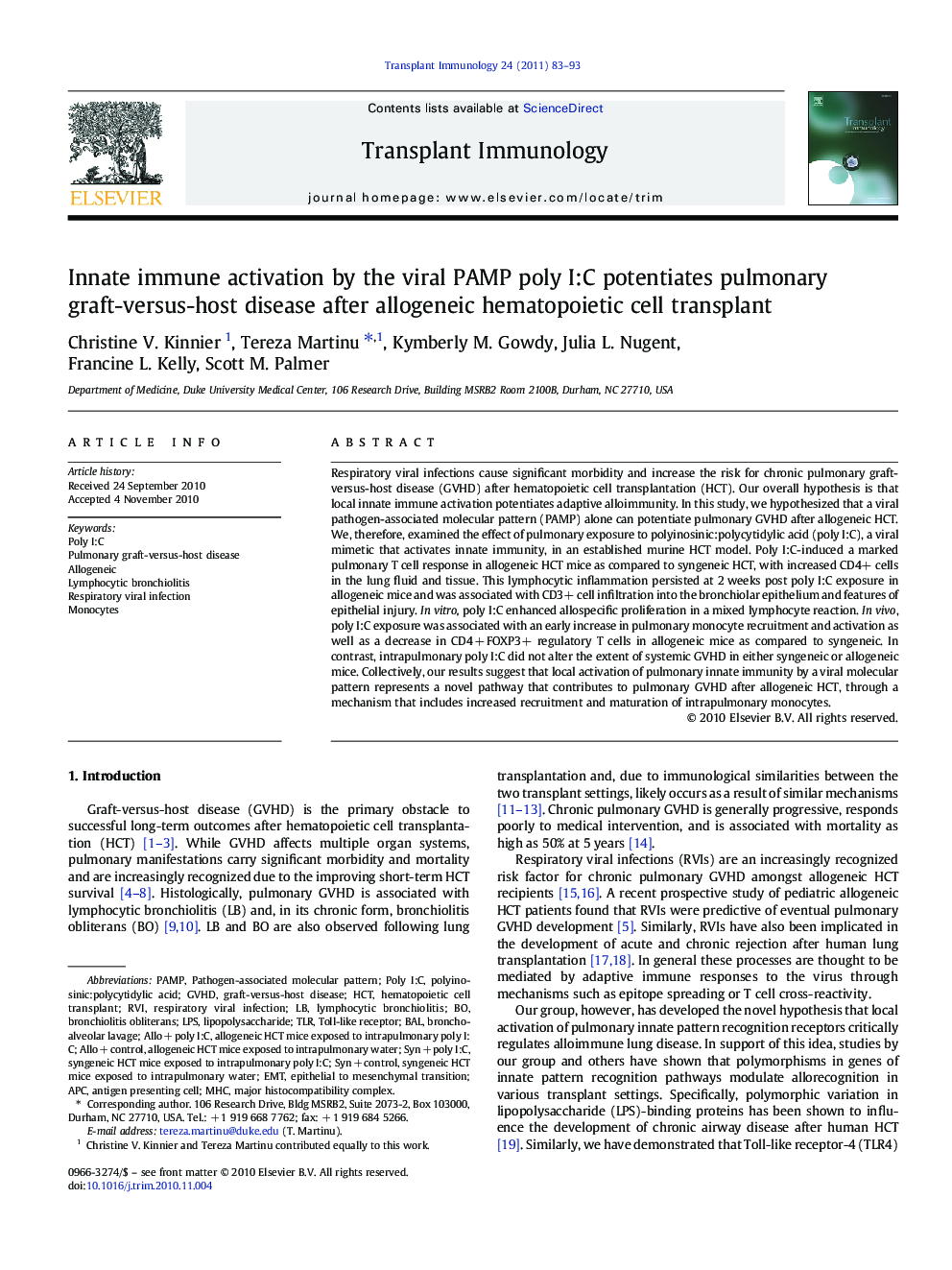| Article ID | Journal | Published Year | Pages | File Type |
|---|---|---|---|---|
| 6126103 | Transplant Immunology | 2011 | 11 Pages |
Abstract
Respiratory viral infections cause significant morbidity and increase the risk for chronic pulmonary graft-versus-host disease (GVHD) after hematopoietic cell transplantation (HCT). Our overall hypothesis is that local innate immune activation potentiates adaptive alloimmunity. In this study, we hypothesized that a viral pathogen-associated molecular pattern (PAMP) alone can potentiate pulmonary GVHD after allogeneic HCT. We, therefore, examined the effect of pulmonary exposure to polyinosinic:polycytidylic acid (poly I:C), a viral mimetic that activates innate immunity, in an established murine HCT model. Poly I:C-induced a marked pulmonary T cell response in allogeneic HCT mice as compared to syngeneic HCT, with increased CD4+ cells in the lung fluid and tissue. This lymphocytic inflammation persisted at 2Â weeks post poly I:C exposure in allogeneic mice and was associated with CD3+ cell infiltration into the bronchiolar epithelium and features of epithelial injury. In vitro, poly I:C enhanced allospecific proliferation in a mixed lymphocyte reaction. In vivo, poly I:C exposure was associated with an early increase in pulmonary monocyte recruitment and activation as well as a decrease in CD4Â +Â FOXP3+ regulatory T cells in allogeneic mice as compared to syngeneic. In contrast, intrapulmonary poly I:C did not alter the extent of systemic GVHD in either syngeneic or allogeneic mice. Collectively, our results suggest that local activation of pulmonary innate immunity by a viral molecular pattern represents a novel pathway that contributes to pulmonary GVHD after allogeneic HCT, through a mechanism that includes increased recruitment and maturation of intrapulmonary monocytes.
Keywords
LPSGvHDRVIHCTAPCBALPAMPTLRallogeneicpathogen-associated molecular patternepithelial to mesenchymal transitionbronchiolitis obliteransLymphocytic bronchiolitisGraft-versus-host diseaseEMTToll-like receptorantigen presenting cellRespiratory viral infectionbronchoalveolar lavagelipopolysaccharidemajor histocompatibility complexMHCMonocytesPoly I:CPolyinosinic:polycytidylic acidhematopoietic cell transplant
Related Topics
Life Sciences
Immunology and Microbiology
Immunology
Authors
Christine V. Kinnier, Tereza Martinu, Kymberly M. Gowdy, Julia L. Nugent, Francine L. Kelly, Scott M. Palmer,
